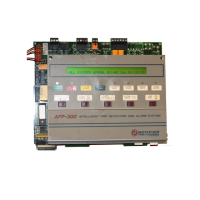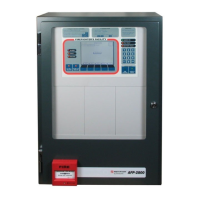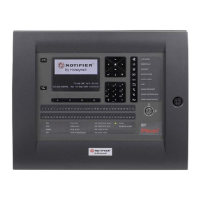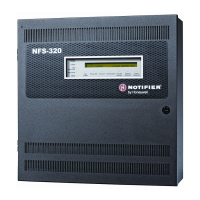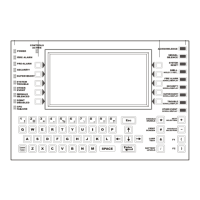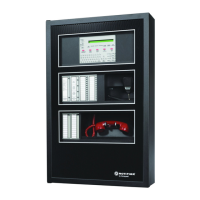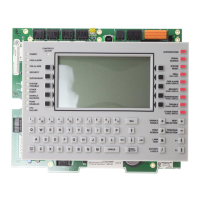$SSHQGL[ * 3RZHU 6XSSO\ &DOFXODWLRQV
Calculating the System Current Draws
G-4 AFP-300/AFP-400 Installation PN 50253:C1 05/22/97
&DOFXODWLQJWKH0D[LPXP6HFRQGDU\3RZHU)LUH$ODUP&XUUHQW
'UDZ
Use Table G-3 to determine the maximum current requirements of secondary power
source during fire alarm conditions. The result obtained from Table G-3 is the amount
of current that the batteries must be able to supply to the fire alarm system. Use the
result in Table G-4 to determine the size of the batteries needed for the fire alarm
system.
Results taken from Table G-3 assume that, while in a fire alarm condition, batteries
must feed the main power supply (and any additional supplies such as the AVPS-24 and
AA-30) with the maximum rated power each supply can provide.
1RWH 7KH 6HFRQGDU\ )LUH $ODUP
/RDG FDQQRW H[FHHG WKH
IROORZLQJ
$ ZLWK 36
EDWWHULHV DQG
$ ZLWK 36
RU 36 EDWWHULHV
On a system with a power supply having a small load, you can calculate the exact alarm
current requirements of the secondary supply. To do so, add the secondary Non-Fire
Alarm Load (from Table G-2) to the total fire alarm current draw of all notification
appliances in the system. Use this value in Table G-4.
7DEOH * 0D[LPXP 6HFRQGDU\ 3RZHU )LUH $ODUP &XUUHQW 'UDZ
Device
No. in Alarm
(Simultaneously)
Multiply
by
Current
(in amps)
Total Current/Type
MPS-400 1 X 6 6
AVPS-24 [ ] X 3
AA-30 [ ] X 3
AA-120 [ ] X 7.3
Sum Column for Secondary Fire Alarm Load =
www.PDF-Zoo.com
